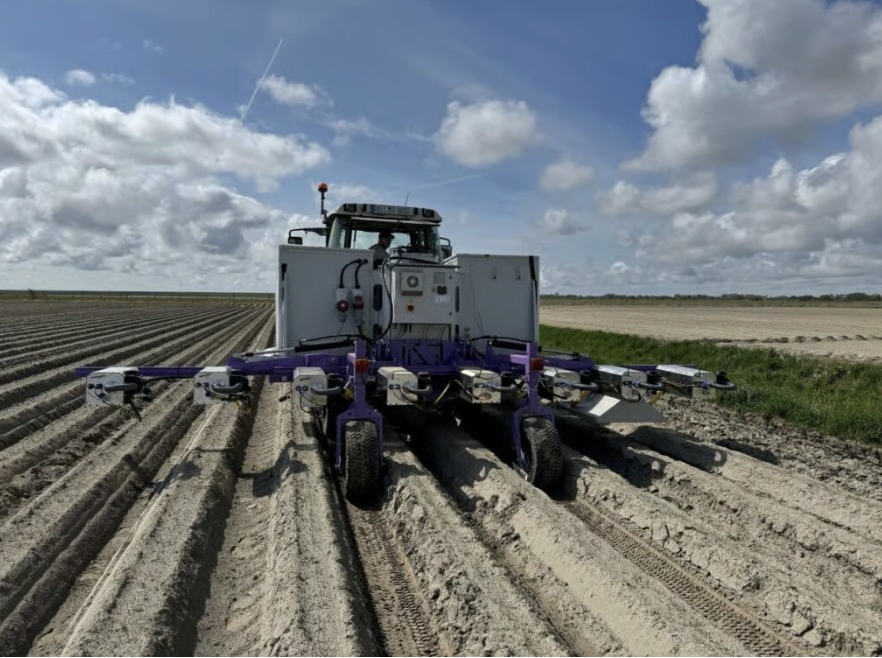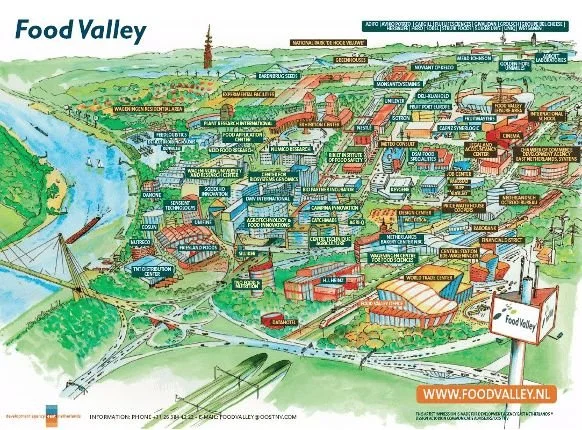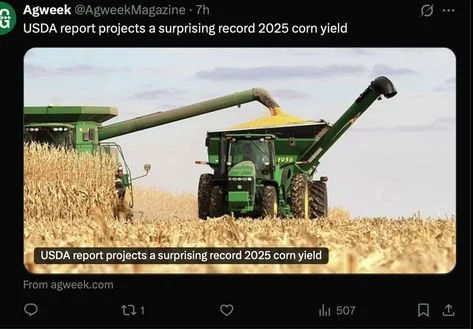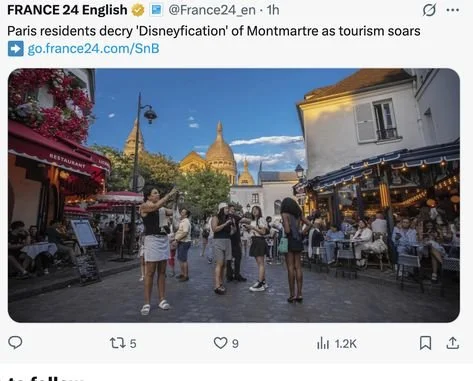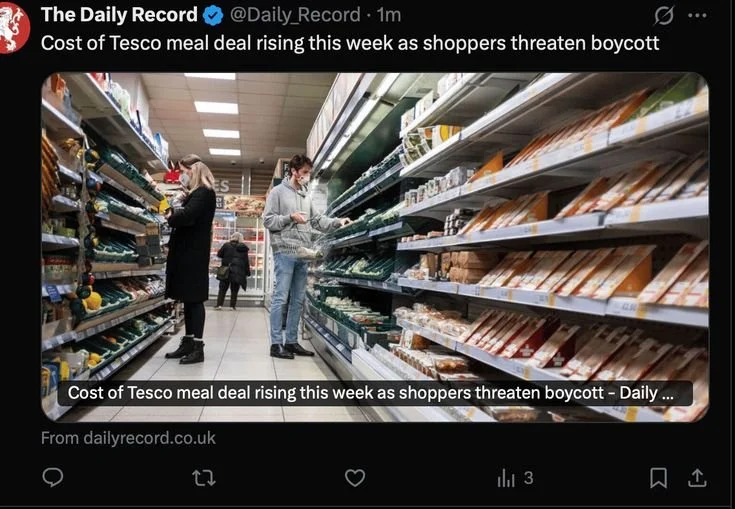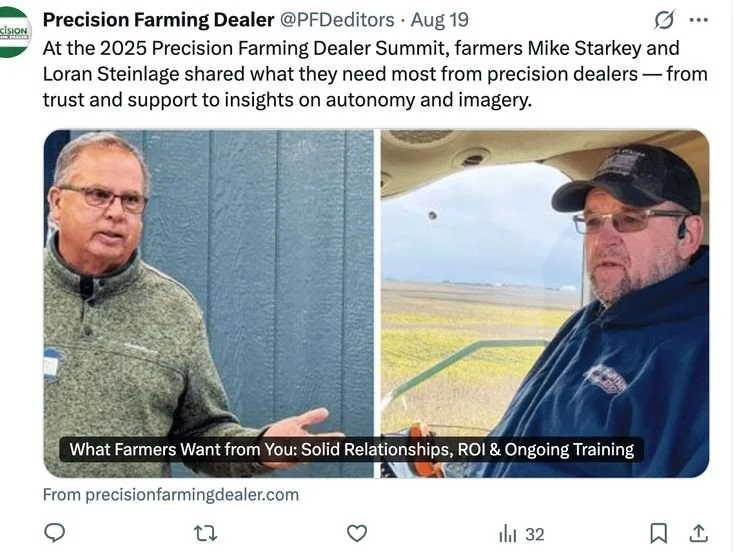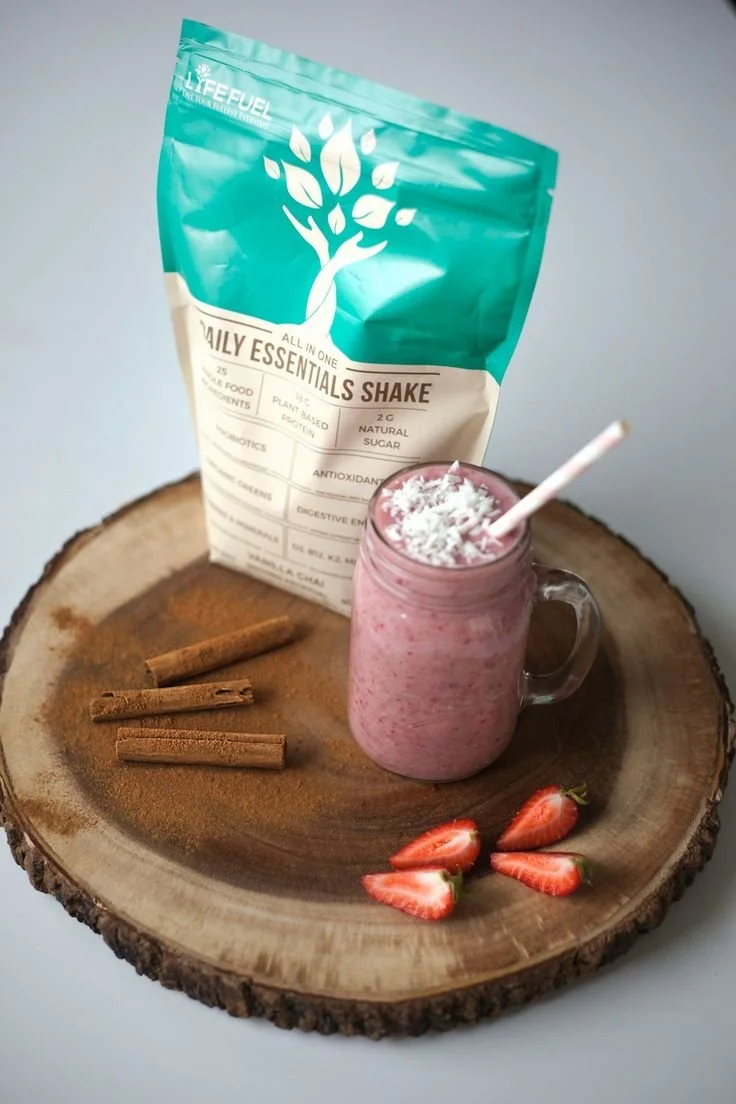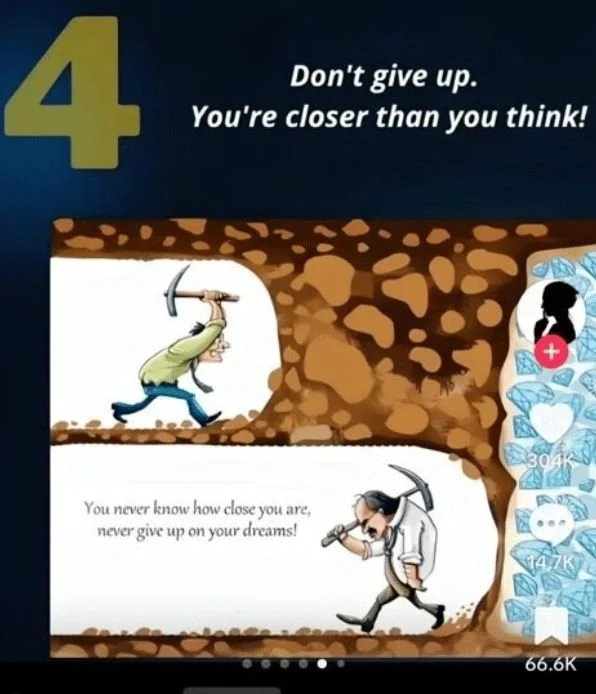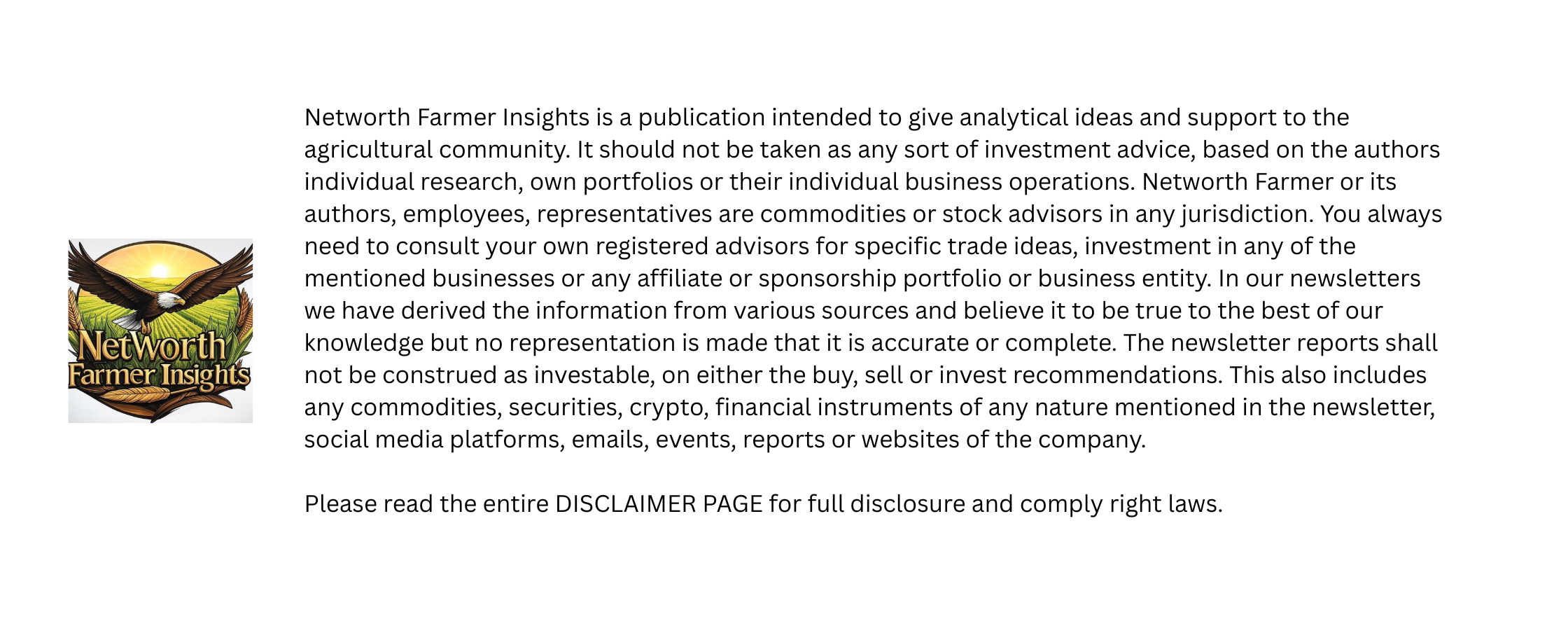Shilly Shallying
“If you are going somewhere take all of you there.”
🚜 New in AgTech
From Fields to Futures: How Germany’s Laser Weeding Robot is Poised to Revolutionize European Organic Farming
A quiet revolution hums across the undulating meadows of Germany. It's very different from the typical buzz of a tractor or the familiar smell of herbicides. Imagine a sleek, inconspicuous machine that is equipped with a laser beam for precision rather than blades or chemicals. A laser weeding robot that promises to eliminate long-standing obstacles in organic farming is the brainchild of a dream that a resolute organic farmer turned developer has fostered into a reality.
The Spark in the Soil: A Farmer’s Frustration Ignites Innovation
Our story begins with Jens, a German organic farmer whose fields were constantly under attack—not by pests alone, but by an army of weeds demanding labour-intensive removal. Organic farming forbids synthetic herbicides, making weed control a thorny, costly problem. Jens' annual labour costs to combat weeds soared close to €200,000, a figure that many small-to-medium farmers across Europe would only grimace at. But Jens had a vision – a spark lit by frustration but fuelled by hope. What if technology could solve such problems not by replacing nature, but by working alongside it, in harmony?
The Origins of a Laser Warrior: Developing Accuracy in Farming
With the help of engineers, agronomists, and AI experts, Jens created a prototype of a robot that could "see" weeds in the middle of crops and destroy them at their roots with pinpoint laser pulses—all without damaging the soil or the crops themselves.
It was quite an accomplishment. Working independently across enormous plots, the robot had to traverse challenging terrain while distinguishing between hundreds of plant types. As a team became united by conviction, months turned into years as trial and error led to learning from failure.
Cutting Through the Noise
The findings of the pilot tests were shocking, yet they cut through all the background noise. On Jen's farm alone, the robot cut weed-related labour expenses by 80%, saving roughly €160,000 per year. As the sustainability of farming is being threatened by labour shortages and rising wage pressures, this was not simply a win for one farm—it was a solution that might be scaled up to help hundreds, if not thousands, of organic growers across Europe.
With a 6m working width, the Naiture robot can weed between 6 and 8 hectares per day. Photo: Westhof Bio
This possible change is backed by scientific evidence. According to research, organic crop production's variable costs can be as high as 50% due to weed management. Farmers may improve resource allocation, increase productivity, and reduce environmental impact by automating precise weeding.
Looking Beyond Germany: Innovation Abounds on Europe's Soil
Laser weeding has the potential to make a significant impact even beyond Germany. Leading organic agricultural nations are confronted with comparable challenges, such as a lack of available workers, skyrocketing prices, strict laws regarding the use of chemicals, and the critical need to implement climate-smart techniques immediately.
Picture this: non-invasive laser weeding in South French vineyards, where fragile grapes need special care. In contrast, the vast vegetable fields of the Netherlands accept technological solutions as a foundation of competitive agriculture.
The most important thing is to adjust locally. To effectively eradicate weeds and cultivate various crops, specific laser algorithms are needed. Every industry is unique, making a uniform robotics approach impossible. This context reveals an enthusiasm for data-driven, locally relevant solutions. We can fine-tune the laser weeding technology for varied European settings by combining the insights of on-the-ground farmers with the ability of AI to learn and adapt.
What Lies Ahead
No revolution is without its trials. Initial investment costs remain high, especially for small-scale farmers. Integration with existing farm machinery and workflows demands coordination and training. Regulatory frameworks across the EU need to evolve, encouraging innovation while safeguarding safety and data privacy. Yet, these challenges are surmountable, especially if governments and AgTech stakeholders commit to supporting pilot programs, subsidies, and knowledge transfer networks that bring these robots from prototypes to farmers’ trusted partners.
A parallel for the future of farming can be found in the serene German fields where Jens' laser robot now hums obediently beneath a brilliant sky. In this future, technology will be a customised instrument that is shaped by local hands and needs but has the ability to transcend national and cultural boundaries. Observing this story unfold serves as a masterclass in problem-solving and a call to adopt localised solutions that respect ecosystems, empower communities, and promote sustainable growth for farmers, politicians, and tech entrepreneurs around Europe.
At this juncture, the laser robot's beam eliminates weeds and lights the way ahead, paving the way for safer, more environmentally friendly, and more intelligent farming for future generations. By enabling organic farmers to reclaim control over weed management affordably and sustainably, this innovation has the potential to safeguard rural livelihoods, protect biodiversity, and reduce dependence on chemical inputs—all while pioneering a new chapter of European AgTech leadership.
-
What kind of running leads to walking?
The Silicon Valley of Food
It’s not every day that a modest province of more than 2.1 million people finds itself at the center of a global food revolution. Yet Gelderland in Netherlands has become a beacon for anyone who believes that the world’s food crisis can be solved with science, collaboration, and bold ideas. Its quiet town, Wageningnen, though unassuming, home to Food Valley, a powerhouse ecosystem that’s quietly redefining how we grow, process, and consume food. How did a quiet town in the Netherlands become the Silicon Valley of food?
At the heart of Food Valley is Wageningen University & Research (WUR). This is one of the world’s most renowned agricultural and life sciences universities. For over a century, WUR has been shaping breakthroughs in plant breeding, animal husbandry, and sustainable food production. Its motto, “To explore the potential of nature to improve the quality of life” , has become a rallying cry for scientists, students, and entrepreneurs. The influence of the university is felt far beyond the confines of the campus. The Wageningen University consistently ranks among the best agricultural research institutes in the world. As a result, it is able to attract academics from all over the world and form relationships with multinational food corporations such as Unilever, Nestlé, and FrieslandCampina. This pioneering institution's lecture halls and research farms essentially sowed the seeds of Food Valley.
Food Valley isn’t a single lab or company. It’s a carefully cultivated cluster of over 3,000 agrifood companies, research institutes, and startups working together on cutting-edge solutions. The ecosystem has a wide array of projects such as developing drought-resistant crops, precision fermentation for lab-grown proteins, just to name a few. These projects aim to make food production more efficient, climate-resilient, and less dependent on scarce resources like water and arable land. Wageningen’s scientists helped develop high-yield, disease-resistant potato varieties that thrive in dry climates. These potatoes now feed millions in sub-Saharan Africa, transforming local food security and livelihoods. Additionally, Food Valley startups are pioneering plant-based meats, insect protein, and alternative dairy. They're making smart greenhouses that use AI and vertical farms that let people produce fresh greens in city supermarkets in Berlin and all the way to Dubai.
What sets Food Valley apart isn’t just technology. It’s the collaborative spirit that connects farmers, researchers, corporates, and governments. Startups here don’t operate in silos. A rich ecosystem of knowledge-sharing, public funding, and testbeds facilitates the rapid prototyping and scaling of ideas. The Dutch government plays a critical role as both funder and facilitator. The Netherlands dedicates significant national and EU-level funding to agrifood R&D, providing grants and incentives for sustainable farming and food innovation. Local authorities in Wageningen and surrounding towns have also invested in business parks, incubation hubs, and infrastructure to help young companies thrive.
The Netherlands may be small, it’s about half the size of Ireland. Nonetheless, it’s the second largest agricultural exporter in the world, after the United States. This is because the Dutch have mastered doing more with less. At the heart of this model is the belief that knowledge, not scale alone, will feed the world. Dutch farmers use 90% less water to grow tomatoes compared to the global average. Advanced greenhouses produce peppers and cucumbers year-round with minimal pesticides. Meanwhile, precision livestock systems are cutting methane emissions while boosting animal welfare.
The next frontier is circular agriculture, closing the loop so that waste from one process becomes input for another. Think: turning food waste into animal feed, biogas, or compost to replenish soil fertility. The Food Valley region is also pushing hard on digital agriculture. Satellite imagery, drones, and AI-driven soil monitoring help farmers make real-time decisions that maximize output while minimizing environmental impact. These advances are critical as Europe faces tightening climate rules and an urgent need to balance production with ecological health. For Europe’s agri-innovators, Food Valley offers an inspiring blueprint. It shows how universities, startups, corporates, and governments can co-create solutions that tackle global hunger, climate change, and food waste all at once.
As Europe debates its Common Agricultural Policy, Green Deal targets, and farm-to-fork ambitions, the lessons from this small Dutch town remind us that bold ideas, backed by collaboration and research, can thrive anywhere. The real challenge is scaling them up fast enough to meet the demands of a growing population on a warming planet. If a village of 40,000 can help feed the world, imagine what’s possible if the rest of Europe leans in.
📢 Tweet of The Week
🌍 Fields & Frontiers
Pay for Power: So, you know how you pay for Netflix, Amazon Prime, or Disney+ each month? Well, now Volkswagen is jumping into that game too. Volkswagen has introduced a controversial subscription model in the UK, requiring owners of its ID.3 electric vehicles to pay monthly fees to unlock the full horsepower of their cars. So, the German car company is asking for £16.50 ($22.50) each month if you want to boost your ride by an extra 27 horsepower, taking it from 201 hp up to 228 hp. People are really speaking out about this move, saying it feels like a bit too much when it comes to making money in the automotive world. Here’s more on Auto Express UK.
Minnesota's Gateway to Global Protein Innovation: The state of Minnesota has introduced an innovative platform known as the Protein Navigator. The platform aims to promote protein innovation by connecting businesses and startups with the abundant food and agricultural resources in the state. Protein innovators can take advantage of Minnesota's abundant sustainable food technology and agtech infrastructure thanks to this program, which was co-created by MBold and the AgriGrowth Energy Alliance. Protein Navigator provides a fruitful entry point for European AgTech aficionados in one of the most innovative centres for alternative proteins and food technology in the United States. Minnesota plans to bolster its position as a world leader in protein research and development by encouraging collaboration and improving access to resources. Protein innovators in Europe have a golden opportunity to connect with global leaders in sustainable food systems thanks to this launch. Globe Newswire shares the details.
Photo by LyfeFuel on Unsplash
Waste Powers Fusion: Scientists have developed a new strategy to convert the huge volumes of nuclear waste that we now store into a lucrative source of nuclear fuel. This novel technology use particle accelerators to convert radioactive waste into tritium, a critical but scarce fuel component for nuclear fusion—a clean and efficient energy source. By tapping into this "sleeping" energy reserve, the idea promises to solve the tritium scarcity while also reducing the burden of nuclear waste storage. The potential return is enormous: producing copious, sustainable fusion fuel while removing existing nuclear waste. This daring vision casts a positive light on the future of clean energy and its unavoidable role in powering the earth sustainably. For more information on this topic, please refer to Gizmodo.
3,000 Euros' Worth of Straw Burned: A fire that started while local kids were playing with fireworks damaged a field of about 100 straw bales worth about €3,000 late last week in south Tipperary, just outside Ardfinnan. Response teams from the Cahir and Clonmel fire stations fought the fire for over four hours. It also destroyed a hedge by the road. This event shows how important it is to minimise minimise risk, such as by storing bales in a fireproof place, finding quick ways to collect them, or even using drones to watch over high-risk locations. This is a This incident reminder for European farmers and agritech entrepreneurs that infrastructure that is smart about climate and safety can protect both crops and jobs. Farmers Journal has more.
💡 A Thought For Friday
The Power of Small Steps
As an enthusiast of Agriculture technology, I often have to ground myself with the fact that embracing new technology comes with highs and lows. Now I may not know how this year has been for you but it sure is flying past through us. In today’s thought, I come to you as a caring voice reminding you that feeling stuck or hesitant is quite normal and part of the journey. Your reservations are valid. There is more to innovation in agriculture than just moving quickly. Sometimes, running entails slowing down to a jog so that you can gather power for the road ahead.
Indecision comes with a silent weight. The silent weight often weighs heavily because it’s fuelled by fear— the fear of making the wrong move, wasting resources, or stepping into the unknown. That terror says, "Don't rush, wait." And you listen because you want to keep what you've grown safe. But I want to tell you that not making a decision is a decision, and a lot of the time it's a decision to stay static while the world keeps moving.
So, how do you move forward in the face of uncertainty?
Photo by Pixabay from Pexels
Start small. Focus on what is genuinely important— your desired objectives. Don't get lost in a sea of options; instead, focus on a few distinct approaches. Set a realistic deadline for yourself. A delayed decision is a missed chance.
Listen to your gut. You know and have done more than you give yourself credit for. And don't forget that no choice is ideal. Losses? They will come, but they are the best teachers you can ever have.
Take all of you—your doubts, your hopes, and your courage—and move forth. The future of AgTech in Europe rests on people like you who are willing to take the next step. Sometimes you have to walk before you can run, and walking is still development.
-
Running out of gas!

